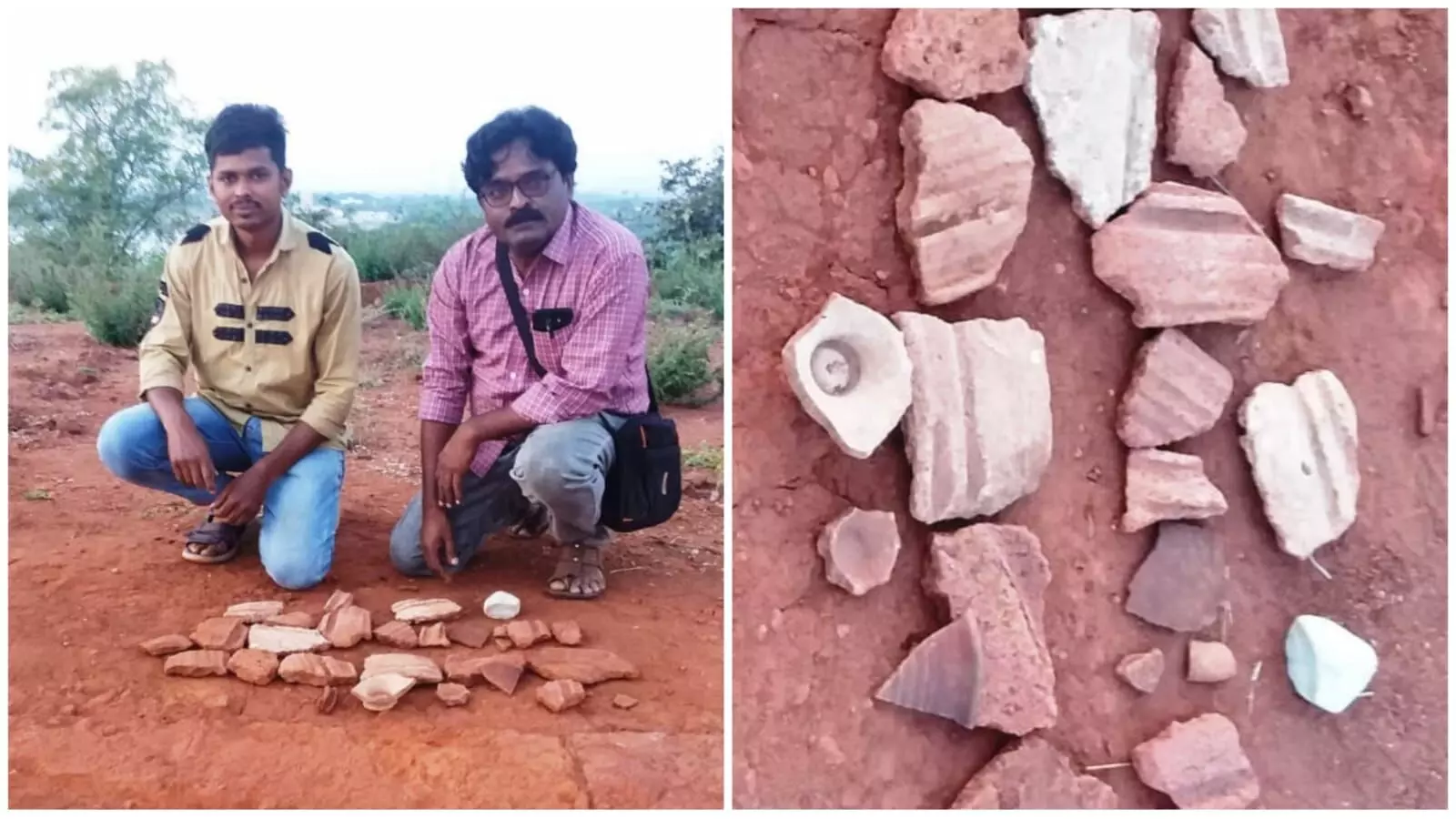New Satavahana site found in TS; 2,000-yr-old bricks discovered at historic site
The discovery was made at Peddapally district by researchers from Potti Sriramulu Telugu University and Public Research Institute for History, Archaeology and Heritage (PRIHAH).
By Amrutha Kosuru
Hyderabad: An early historic site dating back to the Satavahana period has been discovered in Telukunta village in Telangana's Peddapally district.
The discovery was made by researchers from Potti Sriramulu Telugu University and Public Research Institute for History, Archaeology and Heritage (PRIHAH).
The team led by Dr. M.A Srinivasan, assistant professor and general secretary of PRIHAH, found two layers of brick walls and a huge quantity of pottery and tiles from the Satavahana period during their surface exploration carried out on 22 February. "Recently, the grass and plantations were cleared in the area and my team noticed a rare brick-like foundation – a mound. Upon inspection, we found there were bricks, pottery, and roof tiles belonging to the Satvahana period," Dr. Srinvasan explained.
The Satvahana period dates between the 1st Century BC and 2nd Century AD hence making the bricks found approximately 2,000 years old. "Every era or period has its own way of doing pottery. There is always a unique feature. As per previous evidence found and various studies, an element of pottery made in the Satvahana period is lightweight and extremely well burnt. This is how we were able to identify that the bricks and tiles found belonged to the Satvahana period," Dr. Sinivasan said.
The mound, measuring approximately 130 meters in diameter, is located beside a huge tank which could have been the water source for the habitation and the structures on the mound. Dr. Sinivasan explained that the brick wall was built using huge bricks measuring 52 x 26 x 8 cm. "Two layers of the walls seem to be running parallel which most probably may unveil the existence of an apsidal stupa on the mound," he added.
At the base of the mound, too, a layer of the brick wall was seen. Apart from the brick structures, a huge number of tiles were collected that were strewn on the surface of the mound. Below the mound, approximately 200 acres of land which is under cultivation seems to have been the habitational site.
Telukunta is just 5 km away from another very prominent historic site Dhulikatta which has a Satavahana fort and a Buddhist stupa dating between 1st BC and 2nd AD. It is a potential site in the reconstruction of the Satavahana phase in Telangana. Based on the recent findings, Dr. Srinivasan urged the state government to take up scientific exploration and excavation at Telukunta. "The site has the potential to join the list of other prominent sites like Kotilingala in Jagityal district and Peddabankur in Peddapally district," he said. He pointed out that in the 1980s, a coin of the Vishnukundi dynasty was also found at this village.
The research team included Dr. Srinivasan, Y. Bhanu Murthy representing the department of heritage, and Raviteja, a postgraduate student of Telugu University.
In the 1980s, late Thakur Rajaram Singh for the first time identified Telukunta as an early historic site. Former director of the state archaeology department, Dr. V.V Krishna Sastry, identified the area from Telukunta to Dongathurthi hill range as an iron smelting site in the 1st Century BC. "These events show that we can find more historical evidence in the area if proper excavations are carried out," Dr. Srinivasan said.